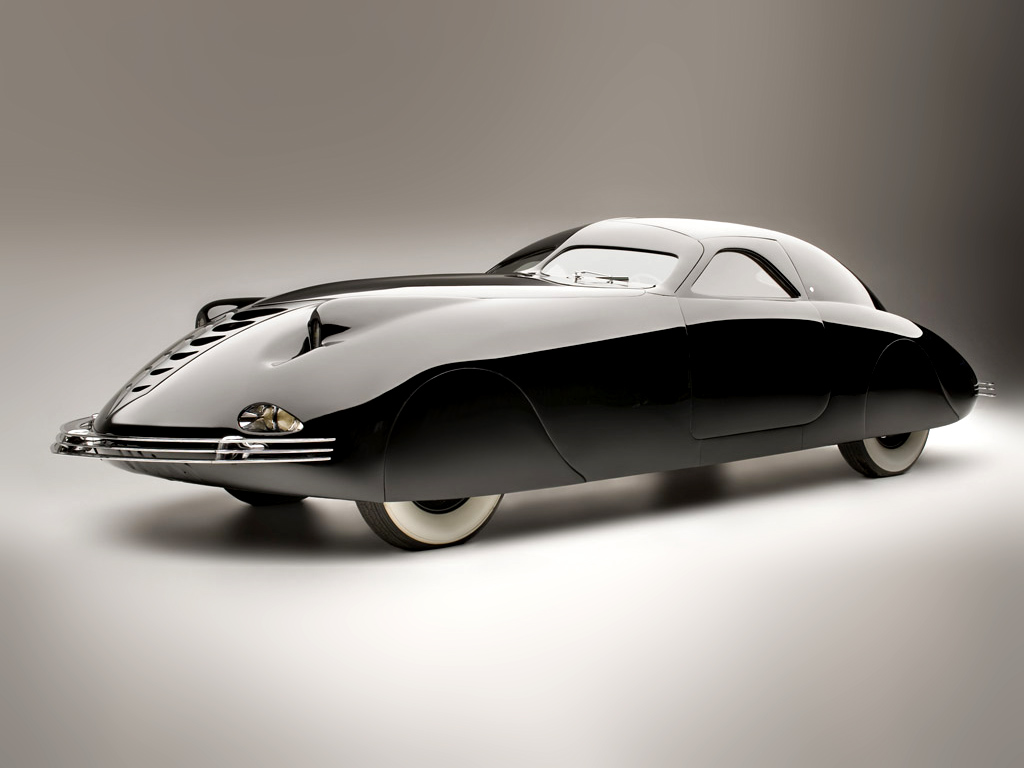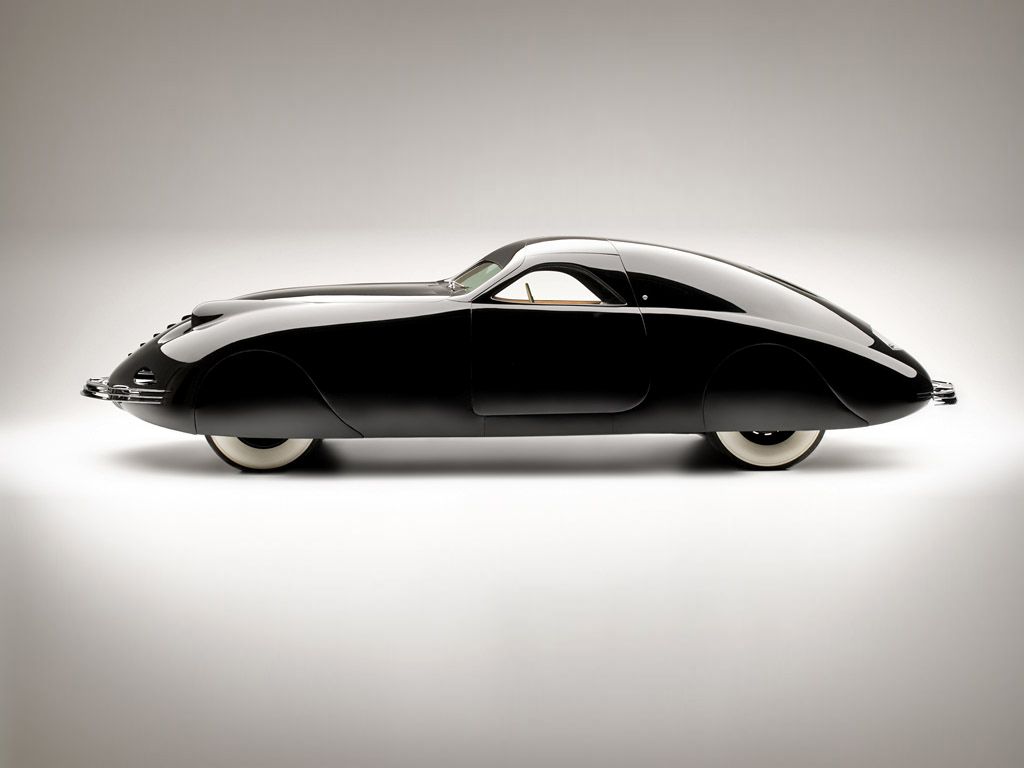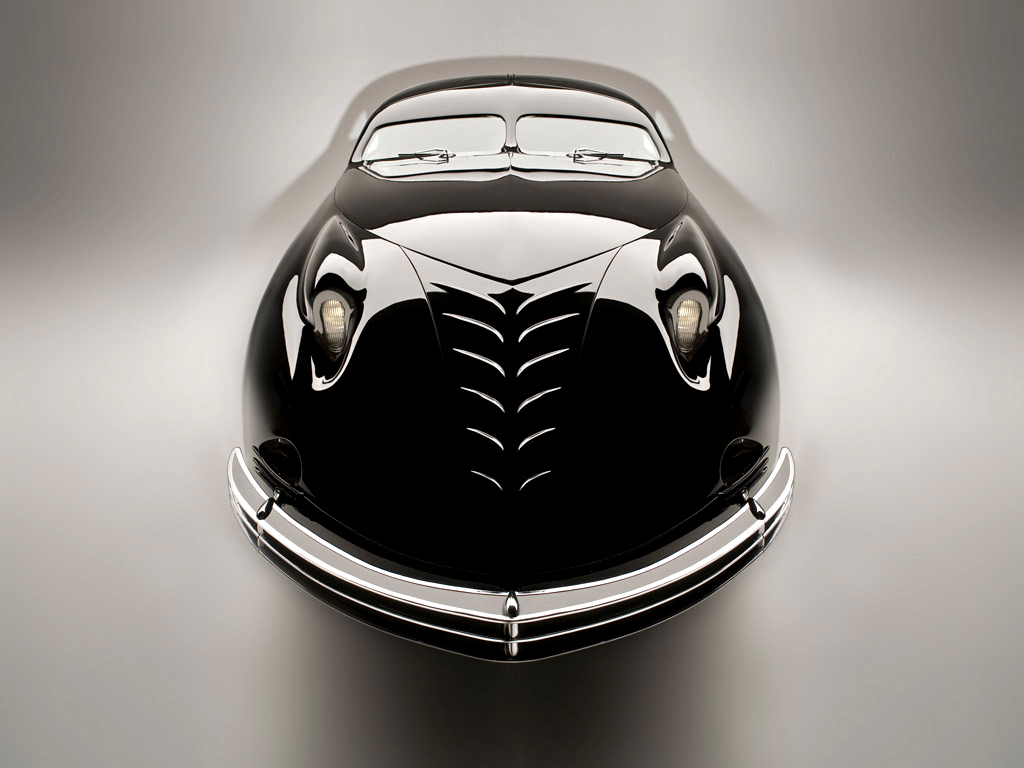1938 Phantom Corsair
In the late thirties Rust Heinz was certain he had the vision of America’s first supercar: a coachbuilt masterpiece of the streamlined era called the Phantom Corsair. Despite not having any experience in automotive design or business, he convinced his rich family to fund development. The result was a modern car built far too ahead of its time, made with too many liberal features to suit its target audience.
Having moved to California in 1936, Heinz was a keen entrepreneur with a high spirited attitude. This was enough to persuade his aunt to fund the car in the face of protest from the rest of the “57 Varieties” Heinz family.¹ Unlike their food for the masses, this car was envisioned for limited production at a staggering price near $15,000 USD.
Immediately, a scale model was made in clay featuring a sleek aerodynamic shape unlike anything on the road at the time. Heinz brought this to Chistian Bohman and Marice Schwartz in Pasadena California to be realized as a full size car.
Bohman & Schwartz started with a custom chassis from the AJ. Bayer Company that used a donor Cord 812 drive train complete with its complex front-wheel drive sub-frame and V8 engine. On top of this they fashioned Heinz’s extravagant body in aluminum and supported it with a steel tube lattice framework. To accommodate the fully enveloped wheels, the body had to be significantly wide at the wheel wells.
Inside, the Phantom Corsair offered room for six people, four upfront and two in the rear. The dashboard had an unusual array of aeronautical instrumentation and a switch panel mounted on the roof. Other unique features included push-button automatic doors, ‘thermostatic’ temperature control, green-tinted safety glass, hydraulic bumpers, and a thick layer of cork/rubber insulation for the cockpit.
Looking like an oversize sucker fish, the front-end featured characteristic vents and sculpted lights that organically blended into the main shape. Chrome was reserved for the front and rear triple-blade bumpers. The split windscreen was dramatically low while the side windows extended higher into the roof. Unfortunately, the small front louvers limited front cooling causing the Lycoming 4.7-liter engine to frequently overheat.
Weighing over 4600 lbs, the Cord V8 was upgraded from its normal 125 bhp to 190 bhp. Driven by the front wheels, this power combined with the car’s aerodynamic shape was reported to take it up to 115 mph (185 kph).
With the prototype costing upwards of $24,000 USD to build, it was time to publicize the car and recoup costs. Promotion included a full page ad issued in Esquire magazine, a display named it ‘The Car of Tomorrow’ at the World’s Fair and it played the role of ‘The Flying Wombat’ in David O. Selznick’s film The Young in Heart (1938). Furthermore it was featured in a Popular Science film series in 1938. Despite all the attention, no orders came in for the eccentric design, reducing the Phantom Corsair to a very expensive one-of.
Heinz used the car until his death at the age of 25 and the car was stored by the family until 1942. Later, it was driven by a relative before being sold and painted gold at some point. By the 1950s, Herb Shriner commissioned Albrecht Goertz, designer of the BMW 507, to rework the car’s front end and increase engine cooling. Additionally, the front window was raised to increase visibility. Probably due to cabin darkness, the roof was modified to include two targa top-style panels.¹
In this modified configuration, the car was sold at auction and purchased by Bill Harrah for inclusion into his spectacular collection. He reversed Goertz’s work and returned the car to its 1938 specification.
Since then, the Phantom Corsair has remained in the National Automobile Museum, formerly known as The Harrah Collection, in Reno, Nevada.. In recent times it was displayed including the 2006 Goodwood Festival, 2007 Pebble Beach Concours and 2009 Amelia Island Concours.
Sources & Further Reading
1. Walsh, Mick et. al. Phantom Corsair, Classic & Sportscar: October 2006.
Story by Richard Owen
In Detail
| type | Concept / Prototype Car |
| built at | Los Angeles, California, USA |
| body stylist | Rust Heinz |
| coachbuilder | Bohman & Schwartz |
| production | 1 |
| engine | Lycoming 80º V8 |
| position | Front Longitudinal |
| aspiration | Natural |
| valvetrain | OHV, 2 Valves per Cyl |
| fuel feed | Stromberg Carburetors |
| displacement | 4729 cc / 288.58 in³ |
| bore | 89 mm / 3.5 in |
| stroke | 95 mm / 3.7 in |
| power | 141.7 kw / 190 bhp @ 4000 rpm |
| specific output | 40.18 bhp per litre |
| bhp/weight | 91.0 bhp per tonne |
| body / frame | Aluminum over Steel Frame w/Cord 812 Front Subframe |
| driven wheels | FWD |
| front brakes | Drums |
| rear brakes | Drums |
| steering | Worm & Nut |
| f suspension | Semi-Elliptic Springs |
| r suspension | Rigid Axle w/Semi-Elliptic Springs |
| curb weight | 2088 kg / 4600 lbs |
| transmission | 4-Speed Automatic |
| top speed | ~185.03 kph / 115 mph |







